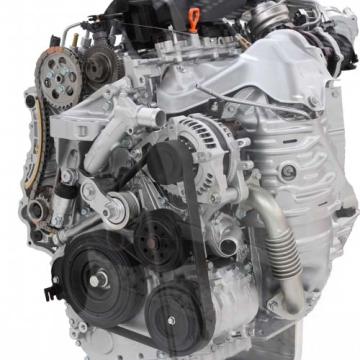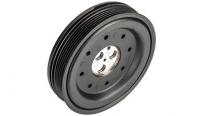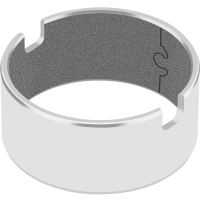Bearing Application Requirements
Mounted on the engine crankshaft, isolator pulley dampers transmit torque to the rubber belt that drives the various engine accessories such as the alternator, the HVAC compressor and the oil and water pumps.
Out-of-balance forces generated by the pistons in the engine, particularly at low idling speeds, transmit asynchronous vibrations to the distribution belt which can ; be felt by the occupants in the car, create noise and reduce the service life of the belt.
GGB Automotive Bearing Solution
To support the belt load applied to the pulley, to reduce NVH (Noise, Vibration and Harshness) and to increase belt life, isolator pulley dampers are fitted with GGB DP11 metal polymer self-lubricating plain bushings.
The structure of GGB DP11 self-lubricating bearings consists of a strong steel backing, to which is bonded a porous bronze sinter interlayer impregnated and overlaid with a PTFE enriched wear resistant bearing layer.
This highly resistant composite bearing structure can withstand specific loads of up to 250 MPa / 36 000 psi, sliding speeds up to 2.5 ms-1 / 500 fpm and temperatures up to 280°C / 536°F.
GGB Automotive Bearings - Benefits
In isolator pulley damper applications, the excellent antifriction properties of GGB DP11 self-lubricating bearings provide the following benefits:
- Low friction performance that does not impair the damping quality of the pulley
- Excellent wear resistance to ensure long service life
- Operation in a high temperature environment with the proximity of the pulley to the engine
- Compact and weight-saving designs using large sized GGB bearings with thin wall thicknesses. For example, bushings with diameters of 150 mm / 6” are available with a wall thicknesses of 1 mm / 0.045”
- Simplified assembly and reduced weight by replacing the axial thrust washer with a space saving reverse flanged bushing
- Lead-free bearing composition in compliance with European EVL, RoHS and WEEE directives








